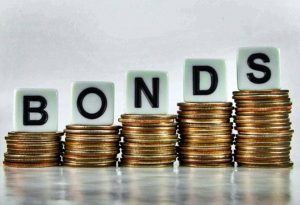Bond Yield:

Yield on India’s benchmark 10-year bonds will stay soft in July, according to Bank of Baroda (BoB) Research.
- A bond is a loan made by an investor to a borrower for a set period of time in return for regular interest payments.
- The time from when the bond is issued to when the borrower has agreed to pay the loan back is called its ‘term to maturity’.
- The bond issuer uses the money raised from bonds to undertake various activities such as funding expansion projects, refinancing existing debt, undertaking welfare activities, etc.
- Bond Yield is the return an investor expects to receive each year over its term to maturity.
- It partially depends on coupon payments, which refer to the periodic interest income obtained as a reward for holding bonds.
- The bondholders receive the bond’s face value at the end of the bond’s life. However, one may buy bonds at par value, discount (at a price lower than par value), or premium (at a price higher than par value) as they trade in the secondary market.
- Therefore, the prevailing market price of bonds also affects the bond yield.
- It is calculated by using the following formula Bond Yield = Coupon Amount/Price
- The prices at which investors buy and sell bonds in the secondary market move in the opposite direction to the yields they expect to receive .
- Once a bond is issued, it offers fixed interest payments to its owner over its term to maturity, which does not change.
- However, interest rates in financial markets change all the time, and, as a result, new bonds that are issued will offer different interest payments to investors than existing bonds.
- For example, suppose interest rates fall. New bonds that are issued will now offer lower interest payments.
- This makes existing bonds that were issued before the fall in interest rates more valuable to investors, because they offer higher interest payments compared to new bonds.
- As a result, the price of existing bonds will increase.
- Bond yield is the earning of an investor from a bond over a specific tenure, expressed in a percentage. It is dependent on the interest rate and bond price.
- As a result, when the interest rate falls, and the bond price is higher than the face value of the bond, your bond yield will be lower than the coupon rate.
- Similarly, when interest rates rise and bond prices are lower than the face value, your bond yield will be higher than the coupon rate.




